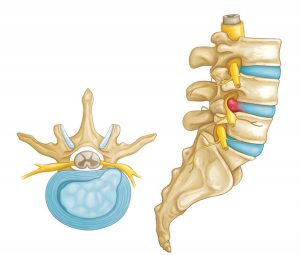Low back pain is the most common musculoskeletal condition seen by GP’s in Australia and can effect up to a quarter of the population at any one time (Wheeler, Karran & Harvie 2018).
Low back pain may be experienced as moderately irritating through to completely debilitating.
What Low Back Pain Looks Like
Pain may be localised in one point between the lower ribs and pelvis, or spread across the back. It may be one sided or both (or hard to tell)
- Pain may spread down the back of the leg (sciatica)
- You can feel weak and stiff
- Difficulty lifting and bending
- Trouble standing up after sitting for any length of time

Common Myths about Low Back Pain
- There is one magic exercise or treatment that helps everyone – I just have to find it.
Given how common low back pain is, you likely know a friend who swears by a particular treatment or exercise that does exactly nothing for you. Different structures in the low back (i.e. bones, different joints, ligaments, muscles) cause similar pains but will respond to different treatments. So a thorough assessment is crucial – to determine exactly what is going on for you and how to best treat it. There are multiple structures in this area which can produce very similar pains, which means that generic “one size fits all” approaches don’t work.
2. My low back is sore. So the problem is coming from my low back.
The lower back is a common victim area between the neighbouring regions (pelvis and hip below and the rib cage and thoracic spine above). It is common for the lower back to be the region that becomes sore and overloaded due to poor movement or control from other body regions. For example, the muscles of the lower back have shared attachments with the ribcage, pelvis and abdominal wall. Dysfunction in any of these regions will impact the lower back. Your low back is likely a victim if treatment or exercises for your low back is ineffective or relief gained is short-lived.
3. I should get a scan to work out what’s going on in my back before I do anything else.
The specific cause of the low back pain is identifiable on a scan in less than 20% of cases. You do not need to know the exact structure at fault in order to treat low back pain – a detailed review of the history, symptoms, aggravating and easing factors along with a review of your movement abilities is sufficient to be able to treat most cases of low back pain. In fact, the world’s best practice guideline states that imaging such as X-rays should not be routinely ordered. Why? Because it’s pretty certain the scan will reveal some form of degeneration which can be misleading and result in unnecessary fear, anxiety, stress, confusion, medications and interventions. Physiotherapists are trained to identify “red flags” – signs of serious pathology that warrant early imaging and can send you for an XR if warranted.
Common Low Back Pain Problems We Treat
- Alignment issues around the vertebral canal (the path of the spinal cord)– spondylolisthesis, spondolitis, stenosis
- Joint irritation and arthritis
- Lumbar discs (“discogenic low back pain”)
- Muscle spasm
- Bone pain (crush fractures, osteoporosis)
- Sciatica and other nerve irritation
- Structures outside of the low back that may be contributing to low back pain
- Pelvis (for example, sacroiliac joints)
- Tendon insertions of the paraspinal muscles
- Dysfunction in the thoracic spine (rib cage region of the spine)
- Dysfunction and imbalances around the hips

Common Causes of Low Back Pain
- Repetitive activities – bending, lifting and twisting
- Prolonged sitting or standing
- Recent reduction in activities that keep you moving well – stretching, strength and mobility exercises
Try This
As mentioned, there is no cure-all and the best management is based on an individualised assessment and treatment plan. But here are a couple things you can try:
- Heat (hot packs, warm showers) will often relieve tired, stressed muscles. Try applying for 20 minutes at a time in a comfortable position
- Laying down (on your back with the knees bent, or on your tummy) are positions which decrease the pressure inside the lumbar discs – try this regularly throughout the day
- Avoid any activity that makes your pain worse, but otherwise remain as active as possible
How We Help
We follow the international best practice guidelines to treat low back pain. These are the guidelines and how we implement them:
- Reduce pain in the short term using manual therapy: massage, mobilisations, dry needling or specific release techniques.
- Education & reassurance: we provide a diagnosis based on your story and functional abilities and an estimated recovery picture of what to expect
- Remaining as active as possible: we provide an individualised exercise program to self manage your problem
- Follow-up reviews to ensure return to function: we help keep your recovery on track and address barriers along the way
References
Wheeler, Karran & Harvie (2018). Low back pain: Can we mitigate the inadvertent psycho-behavioural harms of spinal imaging? Volume 47, Issue 9, September 2018. Accessed 8th October from: https://www1.racgp.org.au/ajgp/2018/september/low-back-pain

